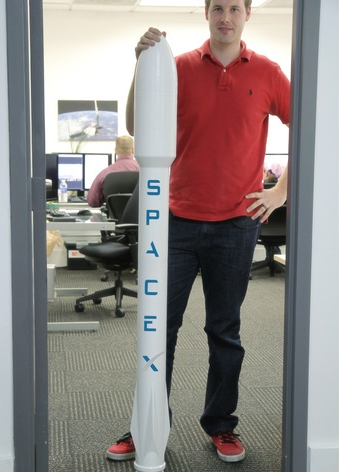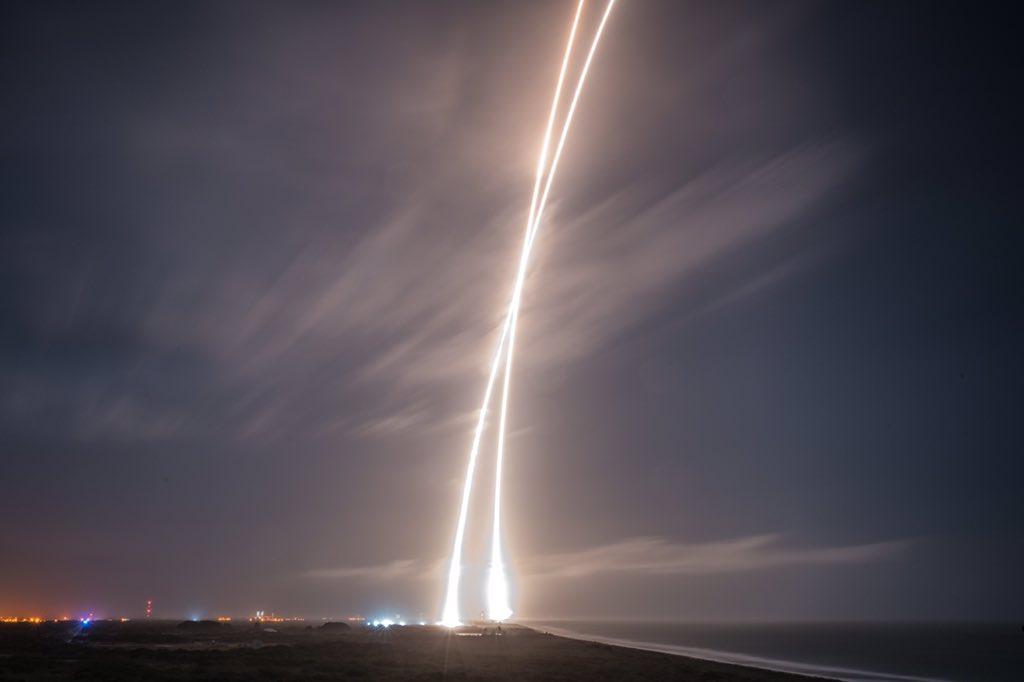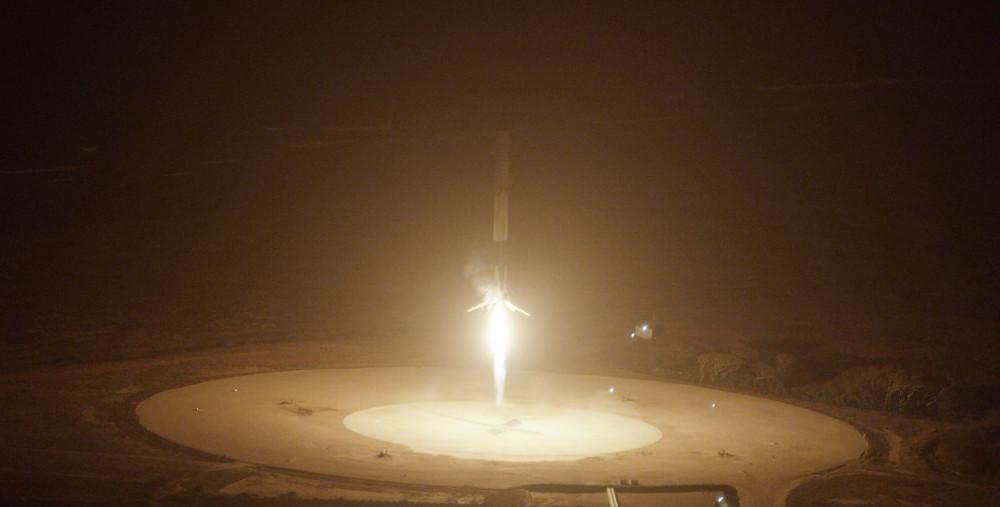 Private space transport services and aerospace manufacturer SpaceX made history on Monday, December 21 when they launched their two-stage Falcon 9 rocket into space, and then successfully returned the rocket’s first stage back to Earth. The fifteen-story-tall first stage rocket launched the upper stage of the rocket into orbit, where it would go on to deposit eleven satellites for SpaceX customer Orbcomm, and then the Falcon 9 returned to Earth for a stunning vertical landing on the prepared landing site at Cape Canaveral Air Force Station in Florida. This was the first time that the Falcon 9 spacecraft successfully returned from orbit and landed.
Private space transport services and aerospace manufacturer SpaceX made history on Monday, December 21 when they launched their two-stage Falcon 9 rocket into space, and then successfully returned the rocket’s first stage back to Earth. The fifteen-story-tall first stage rocket launched the upper stage of the rocket into orbit, where it would go on to deposit eleven satellites for SpaceX customer Orbcomm, and then the Falcon 9 returned to Earth for a stunning vertical landing on the prepared landing site at Cape Canaveral Air Force Station in Florida. This was the first time that the Falcon 9 spacecraft successfully returned from orbit and landed.
This is not the first time that SpaceX has attempted to land its Falcon 9 first stage rocket after a successful launch; they had previously attempted to bring it down on floating landing pads twice. Unfortunately all of the previous attempts were unsuccessful, though the first land-based landing went off without a hitch. The launch of the Falcon 9 was originally scheduled for Sunday, December 20th, however the flight was delayed because there was ten percent more of a chance that the rocket landing would be successful on Monday. SpaceX founder Elon Musk initially believed that the rocket had exploded as it neared the Earth but quickly learned the truth.
“I ran out on the causeway just to watch the landing, and the sonic boom reached me just as the rocket touched down, so I thought at first the rocket exploded. Then I went back into launch control and saw [the] amazing video of the rocket on the pad … I can’t quite believe it,” Musk told reporters after the successful landing.
While the Amazon CEO Jeff Bezos-funded Blue Origin New Shepard rocket successfully landed after take off, their return trip was only suborbital, a feat that has a different set of complications and requirements. Namely, the Blue Origin rocket is significantly smaller and only needed to reach about half of the speed that the Falcon 9 needed to achieve. Also, because it only needed to reach about 62 miles into space versus the 120 miles that Falcon 9 needed to reach, Blue Origin was able to take a different, less complicated, flight path.
You can see video of the Falcon 9 landing here:
And here is a clearer video shot from a helicopter:
This success came at an important time for SpaceX, as their last attempted spaceflight on June 28 ended prematurely when the rocket unexpectedly exploded during launch. SpaceX cited faulty struts for the cause of the explosion, and the rocket’s design was upgraded to prevent it from happening again. According to Musk, the upgraded Falcon 9 offered increased boost thrust, deep cryo oxidizer, a significantly larger upper stage engine bell, a redundant stage separation system and improved structural safety margins.
This week’s space flight and the groundbreaking successful landing of the SpaceX rocket could potentially pave the way for a reusable rocket. Currently the cost of building a Falcom 9 rocket is about $16 million, while the cost of the rocket fuel is only about $200,000. So not only could reusability offer dramatically reduced costs on private spaceflight, but it would reduce costs on things like a trip to Mars and deep space asteroid mining. SpaceX also has used 3D printed components to further reduce the cost of building their rockets, and improve their overall performance capabilities. The thrusters have been testing well, thanks in part to additive manufacturing.
In honor of the successful launch and recovery of the Falcon 9 rocket, Thingiverse user Cosine Additive, a former SpaceX intern, designed and uploaded a detailed, 3D printable replica of the historic spacecraft, seen at right.
The real returned Falcon 9 will be moved from the landing site over to historic Launch Pad 39A, previously used by NASA to launch the Apollo 11 in 1969. SpaceX is planning on test-firing the returned Falcon 9 booster on the pad in order to evaluate how it performs after previous use and to determine what needs to be done to make it reusable. Discuss this story in the SpaceX 3D Printing forum thread on 3DPB.com.
Subscribe to Our Email Newsletter
Stay up-to-date on all the latest news from the 3D printing industry and receive information and offers from third party vendors.
You May Also Like
3D Printing Financials: Fathom Struggles in Financial Quicksand During Critical Transition
Facing a year of key transitions and financial pressures, Fathom (Nasdaq: FTHM) has filed its annual report for 2023 with the U.S. Securities and Exchange Commission (SEC). The document outlines...
Latest Earnings Overview for Australian 3D Printing Firms Titomic and AML3D
Australian 3D printing manufacturing firms Titomic (ASX: TTT) and AML3D (ASX: AL3) reported their financial results for the period from July to December 2023, marking the first half of their...
3D Printing Webinar and Event Roundup: April 7, 2024
Webinars and events in the 3D printing industry are picking back up this week! Sea-Air-Space is coming to Maryland, and SAE International is sponsoring a 3D Systems webinar about 3D...
3D Printing Financials: Unpacking Farsoon and BLT’s 2023 Performance
In the Chinese 3D printing industry, two companies, Farsoon (SHA: 688433) and Bright Laser Technologies, or BLT (SHA: 688333), have recently unveiled their full-year earnings for 2023. Farsoon reported increases...

































